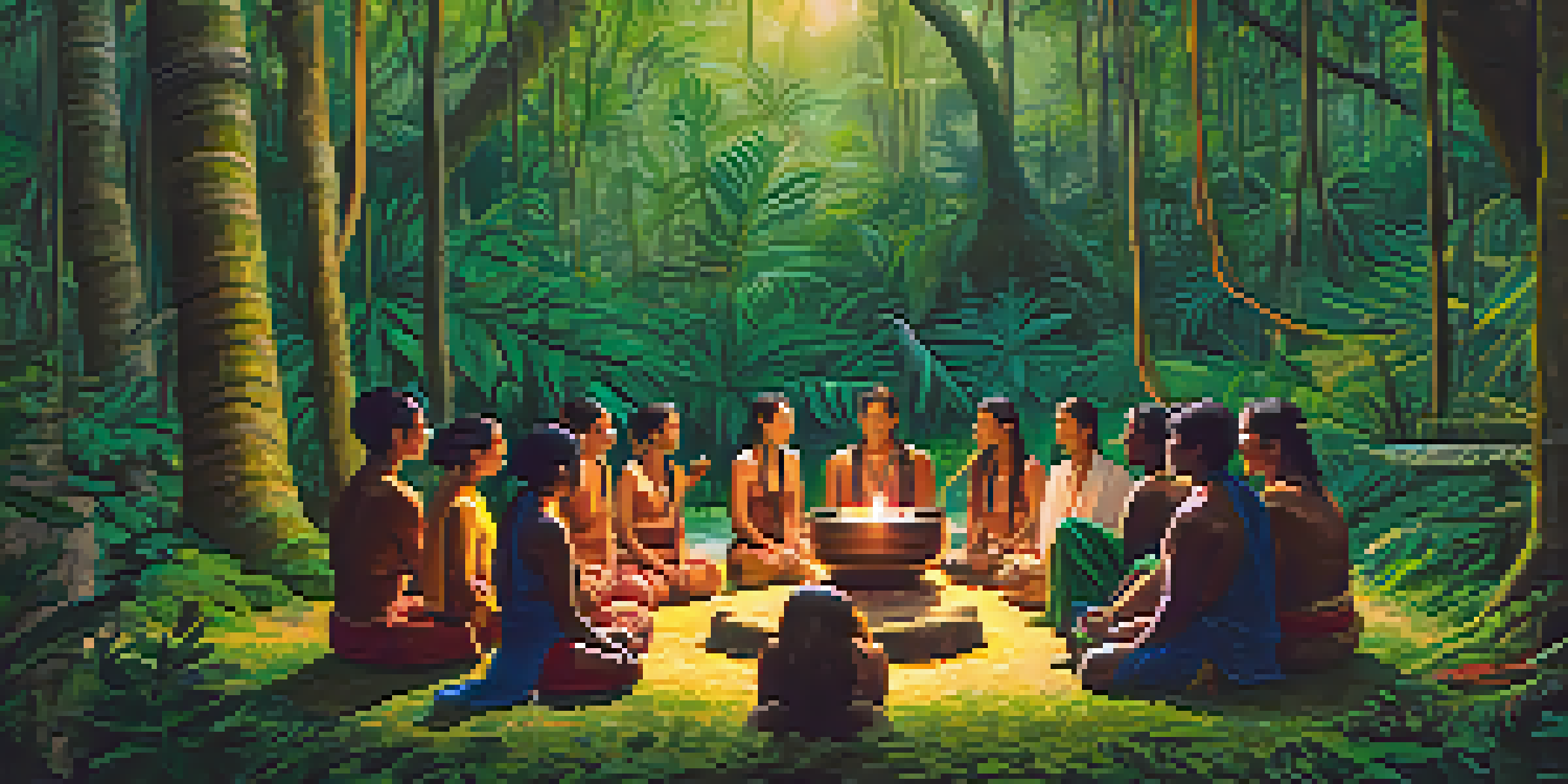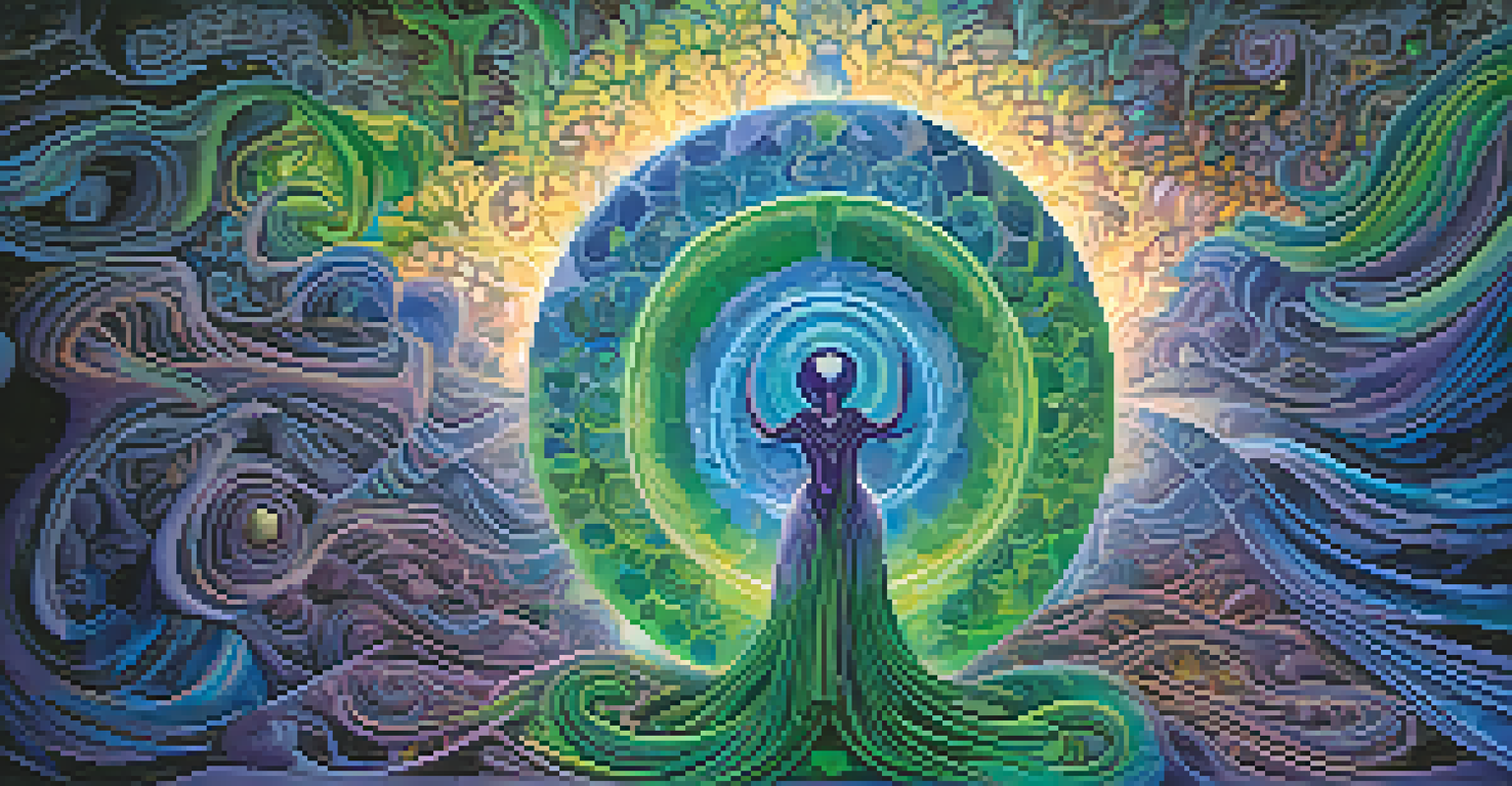Healing Trauma with Ayahuasca: A Spiritual Perspective

Understanding Trauma: The Emotional Landscape
Trauma can be a heavy burden, manifesting in various emotional and psychological challenges. It often stems from experiences that leave deep scars, impacting one’s mental health and daily life. To understand how ayahuasca might help, it's essential to first recognize what trauma entails and how it affects our emotional landscape.
The wound is the place where the Light enters you.
When we talk about trauma, think of it as an emotional wound that doesn’t heal on its own. Just like a physical injury, it requires attention and care. Recognizing the signs of trauma—such as anxiety, depression, or intrusive memories—can be the first step toward healing.
In many cultures, trauma is viewed not just as a personal issue but as a communal one. This perspective sets the stage for exploring holistic approaches, like ayahuasca, which aim to heal not just the individual, but also the connections to community and spirit.
What is Ayahuasca? A Brief Overview
Ayahuasca is a traditional Amazonian brew made from the Banisteriopsis caapi vine and other plants, known for its psychoactive properties. It has been used for centuries by indigenous tribes for spiritual and healing purposes. When ingested, it creates a profound altered state of consciousness, often accompanied by vivid visions and intense emotional experiences.

The active compounds in ayahuasca, particularly DMT (dimethyltryptamine), interact with our brain to facilitate deep introspection and emotional release. This experience can lead to significant personal insights and a better understanding of one’s trauma. It’s like peering into a mirror that reflects not just the visible surface, but the hidden depths of the soul.
Understanding Trauma's Impact
Trauma manifests as emotional wounds that require recognition and care for healing to begin.
Many people seek ayahuasca for its potential to heal emotional wounds, as it provides a unique opportunity to confront and process painful memories. This journey is often described as a rite of passage, allowing individuals to emerge with a renewed sense of clarity and purpose.
The Spiritual Connection: Ayahuasca and Healing
Ayahuasca ceremonies typically involve a shaman or guide who facilitates the experience, ensuring participants are safe and supported. This spiritual guidance is crucial as it helps individuals navigate their journey, often leading to profound realizations about their trauma. The presence of a seasoned practitioner can create a safe space for deep emotional exploration.
Healing takes time, and asking for help is a courageous step.
During the ceremony, participants often report feeling a strong connection to the universe and a sense of oneness with all living beings. This interconnectedness can help individuals understand that their trauma is not merely a personal burden but part of a larger human experience. It’s a reminder that healing can be communal, not just individual.
Many find that these experiences lead to a spiritual awakening, where they feel empowered to release their pain and embrace healing. It’s akin to shedding a heavy cloak, allowing for a lighter, more authentic self to emerge, ready to face the world anew.
Personal Stories: Transformative Experiences
There are countless testimonials from individuals who have turned to ayahuasca for healing trauma. Many share stories of confronting past abuse, loss, or grief in a way that traditional therapies have not allowed. These narratives often highlight moments of catharsis and emotional release that can be life-changing.
For instance, one participant described how visions during the ceremony brought her face-to-face with her childhood trauma, allowing her to process emotions she had long suppressed. This confrontation led to a newfound sense of peace and a deeper understanding of her life’s path. It’s these powerful transformations that draw many to the ayahuasca experience.
Ayahuasca's Healing Potential
Ayahuasca provides a profound experience for participants, allowing them to confront and process their trauma.
While personal stories vary widely, a common thread is the sense of liberation that comes from facing one’s pain. Many report feeling lighter and more connected to themselves and others after their journeys, suggesting that ayahuasca can serve as a bridge to healing and spiritual growth.
Integrating Ayahuasca Experiences into Daily Life
Emerging from an ayahuasca ceremony can feel overwhelming; the insights gained often need time to be processed and integrated into daily life. This integration is crucial for sustaining the healing effects of the experience. Participants are encouraged to take time to reflect on their journey and find practical ways to implement their insights.
Many find journaling helpful as a tool for processing thoughts and emotions post-ceremony. Writing can serve as a bridge between the spiritual insights gained during the experience and everyday life, helping to solidify those lessons. It's like keeping a diary of your soul’s journey, making it easier to revisit and understand.
Additionally, establishing a support system with fellow participants or communities can provide ongoing encouragement and accountability. Sharing experiences and insights with others can create a sense of belonging and reinforce the healing journey, making it more manageable and fulfilling.
Potential Risks and Considerations
While many have found healing through ayahuasca, it’s essential to approach it with caution and awareness of potential risks. Ayahuasca is not suitable for everyone, particularly those with certain mental health conditions or who are on specific medications. Consulting with a healthcare professional before participating in a ceremony is crucial.
The intensity of the experience can also be daunting. Some individuals may encounter challenging emotions or memories that can be difficult to navigate without proper support. It’s important to go into the experience with a solid understanding of what to expect and how to handle any discomfort that arises.
The Importance of Integration
Integrating insights gained from ayahuasca experiences into daily life is crucial for sustaining the healing effects.
Being well-informed and prepared can make all the difference. Seeking out reputable retreats or practitioners who prioritize safety and ethical practices can enhance the experience, ensuring that participants receive the guidance they need to navigate their healing journey effectively.
Final Thoughts: A Path to Healing
Ayahuasca offers a unique spiritual perspective on healing trauma, connecting individuals to their inner selves and the universe. While it’s not a panacea, many find that it opens doors to understanding and processing pain in ways that traditional methods may not. This blend of spirituality and emotional release can be profoundly transformative.
It’s important to remember that healing is a personal journey, and ayahuasca is just one of many paths available. Each individual must find what resonates with them, whether through ayahuasca, therapy, or other holistic practices. The key is to stay open and curious about the healing journey ahead.

Ultimately, the stories of those who have embarked on this journey remind us that healing is possible. With the right support and an open heart, individuals can confront their trauma, find peace, and emerge stronger, ready to embrace life with renewed vigor.